Chemotherapy Drugs
Targeted Therapy Drugs
Immunotherapy Drugs
Hormonal Therapy Drugs
Breast Cancer
Lung Cancer
Colorectal Cancer
Prostate Cancer
Leukemia
Oral
Intravenous
Subcutaneous
Intramuscular
Adult
Pediatric
Geriatric
North America
Europe
South America
Asia Pacific
Middle East and Africa
North America Outlook (USD Billion, 2019-2035)
North America Oncology Drugs Market by Drug Type
Chemotherapy Drugs
Targeted Therapy Drugs
Immunotherapy Drugs
Hormonal Therapy Drugs
North America Oncology Drugs Market by Therapeutic Area Type
Breast Cancer
Lung Cancer
Colorectal Cancer
Prostate Cancer
Leukemia
North America Oncology Drugs Market by Route of Administration Type
Oral
Intravenous
Subcutaneous
Intramuscular
North America Oncology Drugs Market by Patient Demographics Type
Adult
Pediatric
Geriatric
North America Oncology Drugs Market by Regional Type
US
Canada
US Outlook (USD Billion, 2019-2035)
US Oncology Drugs Market by Drug Type
Chemotherapy Drugs
Targeted Therapy Drugs
Immunotherapy Drugs
Hormonal Therapy Drugs
US Oncology Drugs Market by Therapeutic Area Type
Breast Cancer
Lung Cancer
Colorectal Cancer
Prostate Cancer
Leukemia
US Oncology Drugs Market by Route of Administration Type
Oral
Intravenous
Subcutaneous
Intramuscular
US Oncology Drugs Market by Patient Demographics Type
Adult
Pediatric
Geriatric
CANADA Outlook (USD Billion, 2019-2035)
CANADA Oncology Drugs Market by Drug Type
Chemotherapy Drugs
Targeted Therapy Drugs
Immunotherapy Drugs
Hormonal Therapy Drugs
CANADA Oncology Drugs Market by Therapeutic Area Type
Breast Cancer
Lung Cancer
Colorectal Cancer
Prostate Cancer
Leukemia
CANADA Oncology Drugs Market by Route of Administration Type
Oral
Intravenous
Subcutaneous
Intramuscular
CANADA Oncology Drugs Market by Patient Demographics Type
Adult
Pediatric
Geriatric
Europe Outlook (USD Billion, 2019-2035)
Europe Oncology Drugs Market by Drug Type
Chemotherapy Drugs
Targeted Therapy Drugs
Immunotherapy Drugs
Hormonal Therapy Drugs
Europe Oncology Drugs Market by Therapeutic Area Type
Breast Cancer
Lung Cancer
Colorectal Cancer
Prostate Cancer
Leukemia
Europe Oncology Drugs Market by Route of Administration Type
Oral
Intravenous
Subcutaneous
Intramuscular
Europe Oncology Drugs Market by Patient Demographics Type
Adult
Pediatric
Geriatric
Europe Oncology Drugs Market by Regional Type
Germany
UK
France
Russia
Italy
Spain
Rest of Europe
GERMANY Outlook (USD Billion, 2019-2035)
GERMANY Oncology Drugs Market by Drug Type
Chemotherapy Drugs
Targeted Therapy Drugs
Immunotherapy Drugs
Hormonal Therapy Drugs
GERMANY Oncology Drugs Market by Therapeutic Area Type
Breast Cancer
Lung Cancer
Colorectal Cancer
Prostate Cancer
Leukemia
GERMANY Oncology Drugs Market by Route of Administration Type
Oral
Intravenous
Subcutaneous
Intramuscular
GERMANY Oncology Drugs Market by Patient Demographics Type
Adult
Pediatric
Geriatric
UK Outlook (USD Billion, 2019-2035)
UK Oncology Drugs Market by Drug Type
Chemotherapy Drugs
Targeted Therapy Drugs
Immunotherapy Drugs
Hormonal Therapy Drugs
UK Oncology Drugs Market by Therapeutic Area Type
Breast Cancer
Lung Cancer
Colorectal Cancer
Prostate Cancer
Leukemia
UK Oncology Drugs Market by Route of Administration Type
Oral
Intravenous
Subcutaneous
Intramuscular
UK Oncology Drugs Market by Patient Demographics Type
Adult
Pediatric
Geriatric
FRANCE Outlook (USD Billion, 2019-2035)
FRANCE Oncology Drugs Market by Drug Type
Chemotherapy Drugs
Targeted Therapy Drugs
Immunotherapy Drugs
Hormonal Therapy Drugs
FRANCE Oncology Drugs Market by Therapeutic Area Type
Breast Cancer
Lung Cancer
Colorectal Cancer
Prostate Cancer
Leukemia
FRANCE Oncology Drugs Market by Route of Administration Type
Oral
Intravenous
Subcutaneous
Intramuscular
FRANCE Oncology Drugs Market by Patient Demographics Type
Adult
Pediatric
Geriatric
RUSSIA Outlook (USD Billion, 2019-2035)
RUSSIA Oncology Drugs Market by Drug Type
Chemotherapy Drugs
Targeted Therapy Drugs
Immunotherapy Drugs
Hormonal Therapy Drugs
RUSSIA Oncology Drugs Market by Therapeutic Area Type
Breast Cancer
Lung Cancer
Colorectal Cancer
Prostate Cancer
Leukemia
RUSSIA Oncology Drugs Market by Route of Administration Type
Oral
Intravenous
Subcutaneous
Intramuscular
RUSSIA Oncology Drugs Market by Patient Demographics Type
Adult
Pediatric
Geriatric
ITALY Outlook (USD Billion, 2019-2035)
ITALY Oncology Drugs Market by Drug Type
Chemotherapy Drugs
Targeted Therapy Drugs
Immunotherapy Drugs
Hormonal Therapy Drugs
ITALY Oncology Drugs Market by Therapeutic Area Type
Breast Cancer
Lung Cancer
Colorectal Cancer
Prostate Cancer
Leukemia
ITALY Oncology Drugs Market by Route of Administration Type
Oral
Intravenous
Subcutaneous
Intramuscular
ITALY Oncology Drugs Market by Patient Demographics Type
Adult
Pediatric
Geriatric
SPAIN Outlook (USD Billion, 2019-2035)
SPAIN Oncology Drugs Market by Drug Type
Chemotherapy Drugs
Targeted Therapy Drugs
Immunotherapy Drugs
Hormonal Therapy Drugs
SPAIN Oncology Drugs Market by Therapeutic Area Type
Breast Cancer
Lung Cancer
Colorectal Cancer
Prostate Cancer
Leukemia
SPAIN Oncology Drugs Market by Route of Administration Type
Oral
Intravenous
Subcutaneous
Intramuscular
SPAIN Oncology Drugs Market by Patient Demographics Type
Adult
Pediatric
Geriatric
REST OF EUROPE Outlook (USD Billion, 2019-2035)
REST OF EUROPE Oncology Drugs Market by Drug Type
Chemotherapy Drugs
Targeted Therapy Drugs
Immunotherapy Drugs
Hormonal Therapy Drugs
REST OF EUROPE Oncology Drugs Market by Therapeutic Area Type
Breast Cancer
Lung Cancer
Colorectal Cancer
Prostate Cancer
Leukemia
REST OF EUROPE Oncology Drugs Market by Route of Administration Type
Oral
Intravenous
Subcutaneous
Intramuscular
REST OF EUROPE Oncology Drugs Market by Patient Demographics Type
Adult
Pediatric
Geriatric
APAC Outlook (USD Billion, 2019-2035)
APAC Oncology Drugs Market by Drug Type
Chemotherapy Drugs
Targeted Therapy Drugs
Immunotherapy Drugs
Hormonal Therapy Drugs
APAC Oncology Drugs Market by Therapeutic Area Type
Breast Cancer
Lung Cancer
Colorectal Cancer
Prostate Cancer
Leukemia
APAC Oncology Drugs Market by Route of Administration Type
Oral
Intravenous
Subcutaneous
Intramuscular
APAC Oncology Drugs Market by Patient Demographics Type
Adult
Pediatric
Geriatric
APAC Oncology Drugs Market by Regional Type
China
India
Japan
South Korea
Malaysia
Thailand
Indonesia
Rest of APAC
CHINA Outlook (USD Billion, 2019-2035)
CHINA Oncology Drugs Market by Drug Type
Chemotherapy Drugs
Targeted Therapy Drugs
Immunotherapy Drugs
Hormonal Therapy Drugs
CHINA Oncology Drugs Market by Therapeutic Area Type
Breast Cancer
Lung Cancer
Colorectal Cancer
Prostate Cancer
Leukemia
CHINA Oncology Drugs Market by Route of Administration Type
Oral
Intravenous
Subcutaneous
Intramuscular
CHINA Oncology Drugs Market by Patient Demographics Type
Adult
Pediatric
Geriatric
INDIA Outlook (USD Billion, 2019-2035)
INDIA Oncology Drugs Market by Drug Type
Chemotherapy Drugs
Targeted Therapy Drugs
Immunotherapy Drugs
Hormonal Therapy Drugs
INDIA Oncology Drugs Market by Therapeutic Area Type
Breast Cancer
Lung Cancer
Colorectal Cancer
Prostate Cancer
Leukemia
INDIA Oncology Drugs Market by Route of Administration Type
Oral
Intravenous
Subcutaneous
Intramuscular
INDIA Oncology Drugs Market by Patient Demographics Type
Adult
Pediatric
Geriatric
JAPAN Outlook (USD Billion, 2019-2035)
JAPAN Oncology Drugs Market by Drug Type
Chemotherapy Drugs
Targeted Therapy Drugs
Immunotherapy Drugs
Hormonal Therapy Drugs
JAPAN Oncology Drugs Market by Therapeutic Area Type
Breast Cancer
Lung Cancer
Colorectal Cancer
Prostate Cancer
Leukemia
JAPAN Oncology Drugs Market by Route of Administration Type
Oral
Intravenous
Subcutaneous
Intramuscular
JAPAN Oncology Drugs Market by Patient Demographics Type
Adult
Pediatric
Geriatric
SOUTH KOREA Outlook (USD Billion, 2019-2035)
SOUTH KOREA Oncology Drugs Market by Drug Type
Chemotherapy Drugs
Targeted Therapy Drugs
Immunotherapy Drugs
Hormonal Therapy Drugs
SOUTH KOREA Oncology Drugs Market by Therapeutic Area Type
Breast Cancer
Lung Cancer
Colorectal Cancer
Prostate Cancer
Leukemia
SOUTH KOREA Oncology Drugs Market by Route of Administration Type
Oral
Intravenous
Subcutaneous
Intramuscular
SOUTH KOREA Oncology Drugs Market by Patient Demographics Type
Adult
Pediatric
Geriatric
MALAYSIA Outlook (USD Billion, 2019-2035)
MALAYSIA Oncology Drugs Market by Drug Type
Chemotherapy Drugs
Targeted Therapy Drugs
Immunotherapy Drugs
Hormonal Therapy Drugs
MALAYSIA Oncology Drugs Market by Therapeutic Area Type
Breast Cancer
Lung Cancer
Colorectal Cancer
Prostate Cancer
Leukemia
MALAYSIA Oncology Drugs Market by Route of Administration Type
Oral
Intravenous
Subcutaneous
Intramuscular
MALAYSIA Oncology Drugs Market by Patient Demographics Type
Adult
Pediatric
Geriatric
THAILAND Outlook (USD Billion, 2019-2035)
THAILAND Oncology Drugs Market by Drug Type
Chemotherapy Drugs
Targeted Therapy Drugs
Immunotherapy Drugs
Hormonal Therapy Drugs
THAILAND Oncology Drugs Market by Therapeutic Area Type
Breast Cancer
Lung Cancer
Colorectal Cancer
Prostate Cancer
Leukemia
THAILAND Oncology Drugs Market by Route of Administration Type
Oral
Intravenous
Subcutaneous
Intramuscular
THAILAND Oncology Drugs Market by Patient Demographics Type
Adult
Pediatric
Geriatric
INDONESIA Outlook (USD Billion, 2019-2035)
INDONESIA Oncology Drugs Market by Drug Type
Chemotherapy Drugs
Targeted Therapy Drugs
Immunotherapy Drugs
Hormonal Therapy Drugs
INDONESIA Oncology Drugs Market by Therapeutic Area Type
Breast Cancer
Lung Cancer
Colorectal Cancer
Prostate Cancer
Leukemia
INDONESIA Oncology Drugs Market by Route of Administration Type
Oral
Intravenous
Subcutaneous
Intramuscular
INDONESIA Oncology Drugs Market by Patient Demographics Type
Adult
Pediatric
Geriatric
REST OF APAC Outlook (USD Billion, 2019-2035)
REST OF APAC Oncology Drugs Market by Drug Type
Chemotherapy Drugs
Targeted Therapy Drugs
Immunotherapy Drugs
Hormonal Therapy Drugs
REST OF APAC Oncology Drugs Market by Therapeutic Area Type
Breast Cancer
Lung Cancer
Colorectal Cancer
Prostate Cancer
Leukemia
REST OF APAC Oncology Drugs Market by Route of Administration Type
Oral
Intravenous
Subcutaneous
Intramuscular
REST OF APAC Oncology Drugs Market by Patient Demographics Type
Adult
Pediatric
Geriatric
South America Outlook (USD Billion, 2019-2035)
South America Oncology Drugs Market by Drug Type
Chemotherapy Drugs
Targeted Therapy Drugs
Immunotherapy Drugs
Hormonal Therapy Drugs
South America Oncology Drugs Market by Therapeutic Area Type
Breast Cancer
Lung Cancer
Colorectal Cancer
Prostate Cancer
Leukemia
South America Oncology Drugs Market by Route of Administration Type
Oral
Intravenous
Subcutaneous
Intramuscular
South America Oncology Drugs Market by Patient Demographics Type
Adult
Pediatric
Geriatric
South America Oncology Drugs Market by Regional Type
Brazil
Mexico
Argentina
Rest of South America
BRAZIL Outlook (USD Billion, 2019-2035)
BRAZIL Oncology Drugs Market by Drug Type
Chemotherapy Drugs
Targeted Therapy Drugs
Immunotherapy Drugs
Hormonal Therapy Drugs
BRAZIL Oncology Drugs Market by Therapeutic Area Type
Breast Cancer
Lung Cancer
Colorectal Cancer
Prostate Cancer
Leukemia
BRAZIL Oncology Drugs Market by Route of Administration Type
Oral
Intravenous
Subcutaneous
Intramuscular
BRAZIL Oncology Drugs Market by Patient Demographics Type
Adult
Pediatric
Geriatric
MEXICO Outlook (USD Billion, 2019-2035)
MEXICO Oncology Drugs Market by Drug Type
Chemotherapy Drugs
Targeted Therapy Drugs
Immunotherapy Drugs
Hormonal Therapy Drugs
MEXICO Oncology Drugs Market by Therapeutic Area Type
Breast Cancer
Lung Cancer
Colorectal Cancer
Prostate Cancer
Leukemia
MEXICO Oncology Drugs Market by Route of Administration Type
Oral
Intravenous
Subcutaneous
Intramuscular
MEXICO Oncology Drugs Market by Patient Demographics Type
Adult
Pediatric
Geriatric
ARGENTINA Outlook (USD Billion, 2019-2035)
ARGENTINA Oncology Drugs Market by Drug Type
Chemotherapy Drugs
Targeted Therapy Drugs
Immunotherapy Drugs
Hormonal Therapy Drugs
ARGENTINA Oncology Drugs Market by Therapeutic Area Type
Breast Cancer
Lung Cancer
Colorectal Cancer
Prostate Cancer
Leukemia
ARGENTINA Oncology Drugs Market by Route of Administration Type
Oral
Intravenous
Subcutaneous
Intramuscular
ARGENTINA Oncology Drugs Market by Patient Demographics Type
Adult
Pediatric
Geriatric
REST OF SOUTH AMERICA Outlook (USD Billion, 2019-2035)
REST OF SOUTH AMERICA Oncology Drugs Market by Drug Type
Chemotherapy Drugs
Targeted Therapy Drugs
Immunotherapy Drugs
Hormonal Therapy Drugs
REST OF SOUTH AMERICA Oncology Drugs Market by Therapeutic Area Type
Breast Cancer
Lung Cancer
Colorectal Cancer
Prostate Cancer
Leukemia
REST OF SOUTH AMERICA Oncology Drugs Market by Route of Administration Type
Oral
Intravenous
Subcutaneous
Intramuscular
REST OF SOUTH AMERICA Oncology Drugs Market by Patient Demographics Type
Adult
Pediatric
Geriatric
MEA Outlook (USD Billion, 2019-2035)
MEA Oncology Drugs Market by Drug Type
Chemotherapy Drugs
Targeted Therapy Drugs
Immunotherapy Drugs
Hormonal Therapy Drugs
MEA Oncology Drugs Market by Therapeutic Area Type
Breast Cancer
Lung Cancer
Colorectal Cancer
Prostate Cancer
Leukemia
MEA Oncology Drugs Market by Route of Administration Type
Oral
Intravenous
Subcutaneous
Intramuscular
MEA Oncology Drugs Market by Patient Demographics Type
Adult
Pediatric
Geriatric
MEA Oncology Drugs Market by Regional Type
GCC Countries
South Africa
Rest of MEA
GCC COUNTRIES Outlook (USD Billion, 2019-2035)
GCC COUNTRIES Oncology Drugs Market by Drug Type
Chemotherapy Drugs
Targeted Therapy Drugs
Immunotherapy Drugs
Hormonal Therapy Drugs
GCC COUNTRIES Oncology Drugs Market by Therapeutic Area Type
Breast Cancer
Lung Cancer
Colorectal Cancer
Prostate Cancer
Leukemia
GCC COUNTRIES Oncology Drugs Market by Route of Administration Type
Oral
Intravenous
Subcutaneous
Intramuscular
GCC COUNTRIES Oncology Drugs Market by Patient Demographics Type
Adult
Pediatric
Geriatric
SOUTH AFRICA Outlook (USD Billion, 2019-2035)
SOUTH AFRICA Oncology Drugs Market by Drug Type
Chemotherapy Drugs
Targeted Therapy Drugs
Immunotherapy Drugs
Hormonal Therapy Drugs
SOUTH AFRICA Oncology Drugs Market by Therapeutic Area Type
Breast Cancer
Lung Cancer
Colorectal Cancer
Prostate Cancer
Leukemia
SOUTH AFRICA Oncology Drugs Market by Route of Administration Type
Oral
Intravenous
Subcutaneous
Intramuscular
SOUTH AFRICA Oncology Drugs Market by Patient Demographics Type
Adult
Pediatric
Geriatric
REST OF MEA Outlook (USD Billion, 2019-2035)
REST OF MEA Oncology Drugs Market by Drug Type
Chemotherapy Drugs
Targeted Therapy Drugs
Immunotherapy Drugs
Hormonal Therapy Drugs
REST OF MEA Oncology Drugs Market by Therapeutic Area Type
Breast Cancer
Lung Cancer
Colorectal Cancer
Prostate Cancer
Leukemia
REST OF MEA Oncology Drugs Market by Route of Administration Type
Oral
Intravenous
Subcutaneous
Intramuscular
REST OF MEA Oncology Drugs Market by Patient Demographics Type
Adult
Pediatric
Geriatric
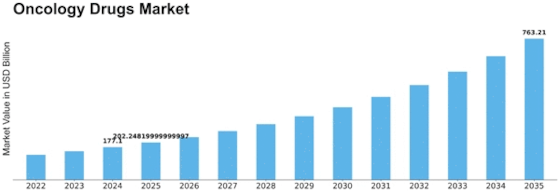

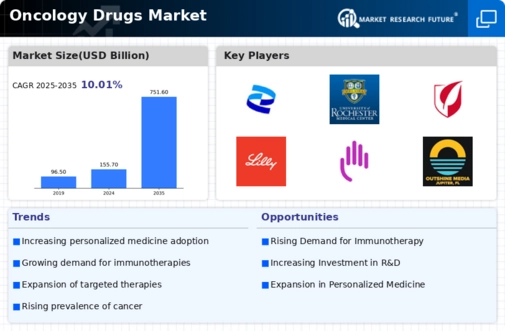
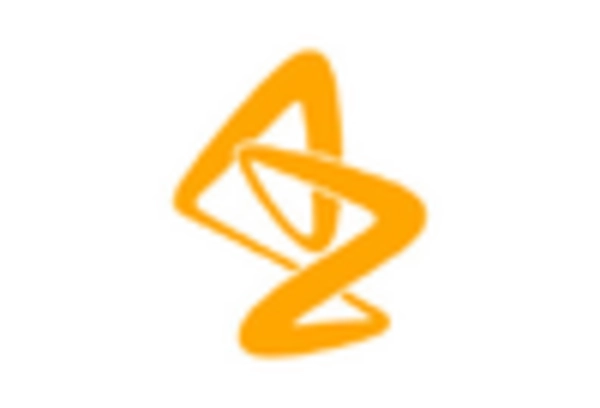
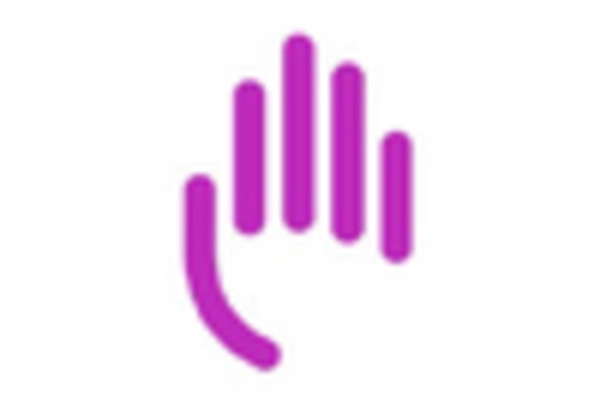
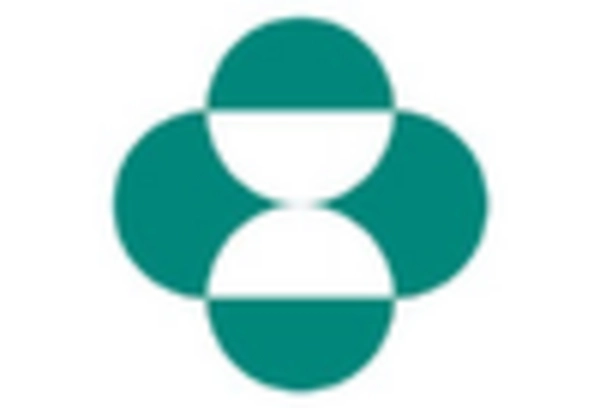
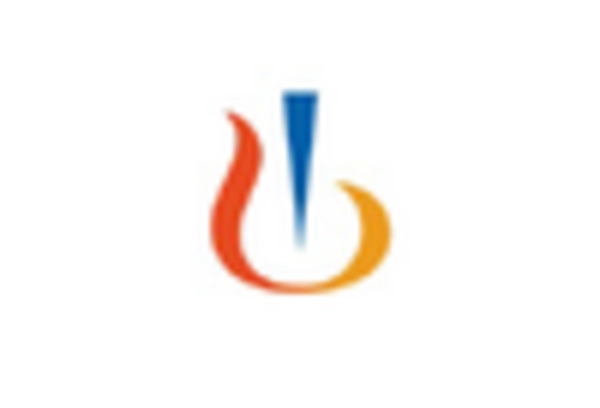
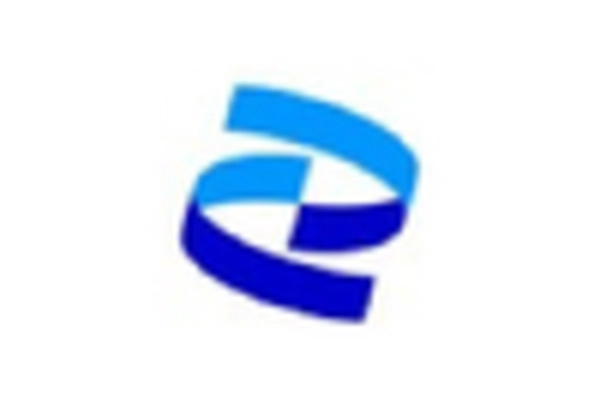
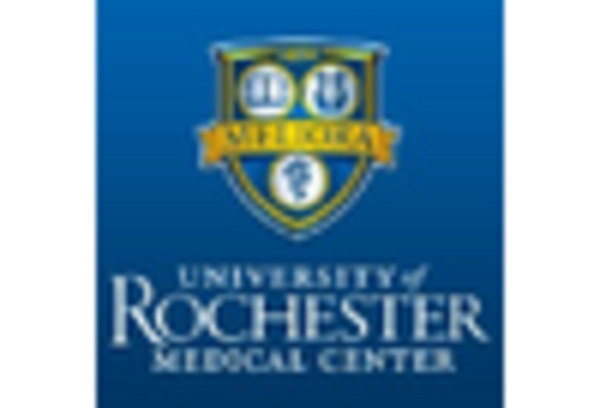









Leave a Comment